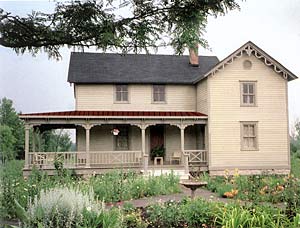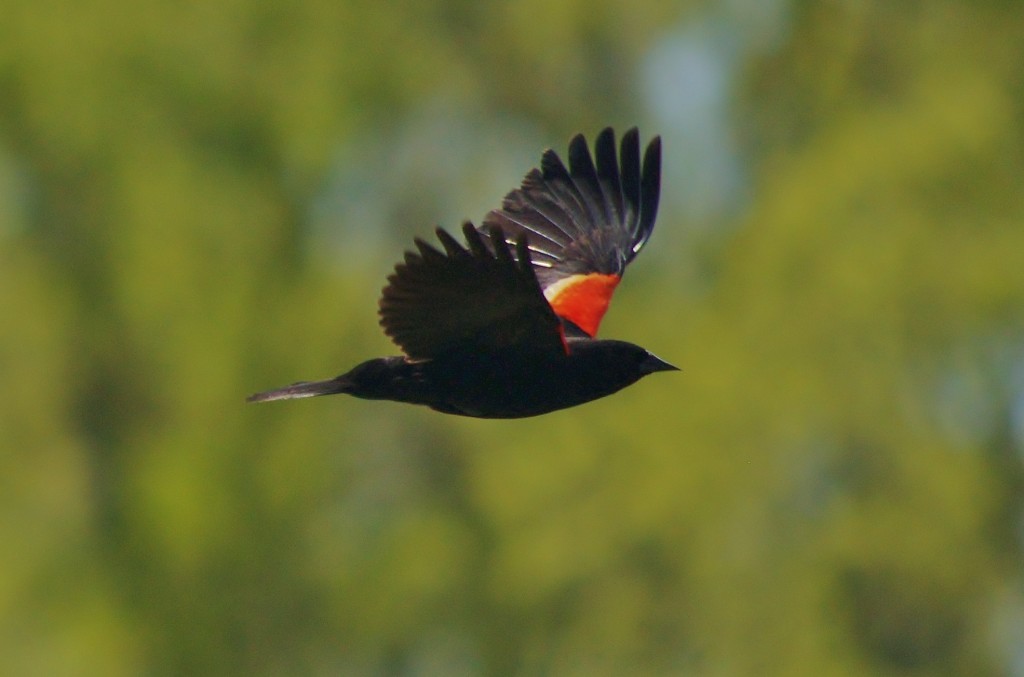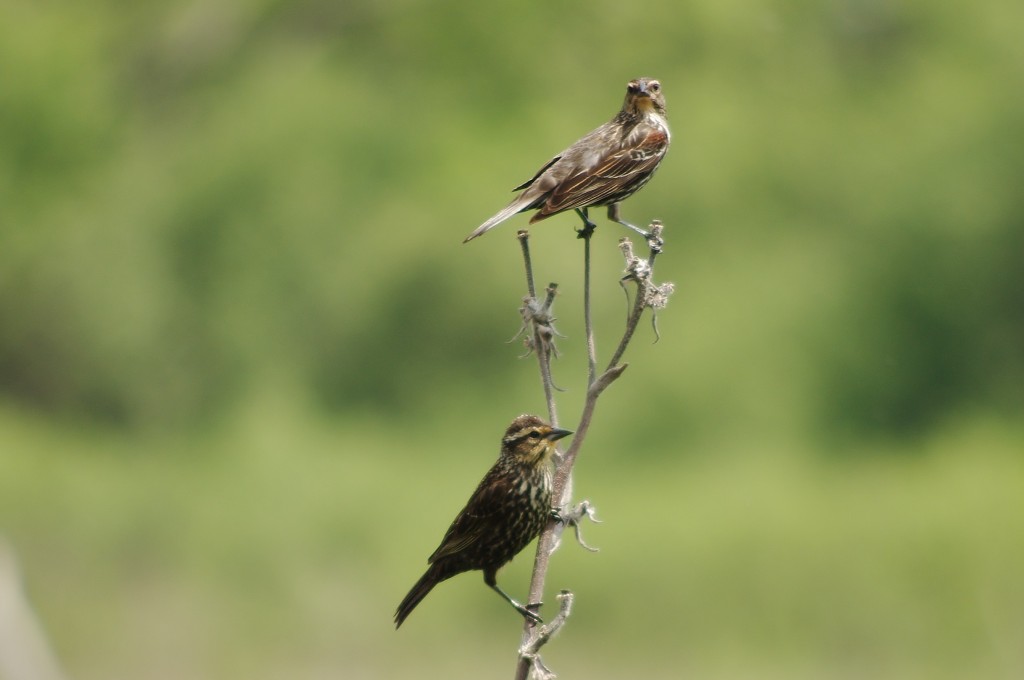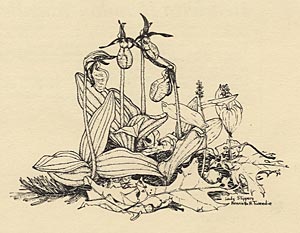The circa 1850’s Franzosenbusch Prairie House represents more than 150 years of local history, and is considered the oldest structure in Westchester. Situated at the north end of the original 12,000 to 15,000 year old Wolf Road Prairie, the house serves as the gateway to the preserve. The Prairie House is being restored as a nature center and museum.

The Prairie House represents three distinct historic periods of construction dating from c.1852 through c.1870. The new addition, funded by an Illinois First grant, was constructed in 2000 at the rear of the building to provide an activity room, public washrooms and handicap access.
The original two rooms within the Prairie House date back to early settlement of the area known as Franzosenbusch when German immigrants arrived here from Hanover, Germany. In c.1853 the building served as the first Lutheran schoolroom and teachers’ quarters in Proviso Township. At this point in the history of the building, the structure was a stand alone schoolhouse containing two small rooms with its own four walls, peaked roof, student doors, narrow windows and living space for teachers and their families. Heat was provided by a small cast iron stove which was also used for cooking. There was no running water, electricity or indoor plumbing. Records indicate that one married teacher, his wife and seven children lived in these spartan and cramped quarters. The children slept in the loft of the schoohouse on beds of straw. The schoolhouse was also used briefly for church services and community gatherings.
As the Franzosenbusch community grew and prospered, the original schoolhouse became too small. In about c.1858, a new school building was constructed, and the old schoolhouse was converted to a farmhouse. The western addition of the house was attached at this time. Around c.1870 the building was enlarged again. This time the south facing section of the house was expanded by about ten feet, and the second floor was added.
The original schoolhouse within the structure contains elements of medieval German “fachwerk” half-timbered frame construction, a rarity in Illinois. Additions to the house were constructed in the modified balloon frame style of architecture. This construction style became famous in rebuilding Chicago after the Great Fire of October 9, 1871. Today the Prairie House provides:
- A time capsule of 19th Century lifestyles and cultures only a moment away from the sights and sounds of the 21st Century.
- An educational facility for students, teachers and the general public including prairie tours, natural history, Native American history, early settlement history, botany, biology, ecology and native ecosystem restoration programs.
- An authentic replication of the first Lutheran schoolroom/teacherage in Proviso Township with information about the early days of this German farming community and the founding of the village of Westchester. For more information on the history and genealogy of the area see http://www.franzosenbuschheritageproject.org),an independent web site of Franzosenbusch Heritage Project, an affiliate of Save the Prairie Society.
- A gathering place for lectures, programs, classes and events with a meeting room available for use by conservation, scientific, historic, cultural, youth and civic organizations.
- The Prairie House Gardens present a colorful blend of formal designs and hardy perennials against the backdrop of the original prairie grasses and wildflowers.
- A place to celebrate special occasions and join in ceremonies, performances, art exhibits and historical re-enactments.
The Prairie House represents three distinct historic periods of construction dating from c.1852 through c.1870. The new addition, funded by an Illinois First grant, was constructed in 2000 at the rear of the building to provide an activity room, public washrooms and handicap access.
The original two rooms within the Prairie House date back to early settlement of the area known as Franzosenbusch when German immigrants arrived here from Hanover, Germany. In c.1853 the building served as the first Lutheran schoolroom and teachers’ quarters in Proviso Township. At this point in the history of the building, the structure was a stand alone schoolhouse containing two small rooms with its own four walls, peaked roof, student doors, narrow windows and living space for teachers and their families. Heat was provided by a small cast iron stove which was also used for cooking. There was no running water, electricity or indoor plumbing. Records indicate that one married teacher, his wife and seven children lived in these spartan and cramped quarters. The children slept in the loft of the schoohouse on beds of straw. The schoolhouse was also used briefly for church services and community gatherings.
As the Franzosenbusch community grew and prospered, the original schoolhouse became too small. In about c.1858, a new school building was constructed, and the old schoolhouse was converted to a farmhouse. The western addition of the house was attached at this time. Around c.1870 the building was enlarged again. This time the south facing section of the house was expanded by about ten feet, and the second floor was added.
The original schoolhouse within the structure contains elements of medieval German “fachwerk” half-timbered frame construction, a rarity in Illinois. Additions to the house were constructed in the modified balloon frame style of architecture. This construction style became famous in rebuilding Chicago after the Great Fire of October 9, 1871. Today the Prairie House provides:
A time capsule of 19th Century lifestyles and cultures only a moment away from the sights and sounds of the 21st Century.
An educational facility for students, teachers and the general public including prairie tours, natural history, Native American history, early settlement history, botany, biology, ecology and native ecosystem restoration programs.
An authentic replication of the first Lutheran schoolroom/teacherage in Proviso Township with information about the early days of this German farming community and the founding of the village of Westchester. For more information on the history and genealogy of the area see http://www.franzosenbuschheritageproject.org),an independent web site of Franzosenbusch Heritage Project, an affiliate of Save the Prairie Society.
A gathering place for lectures, programs, classes and events with a meeting room available for use by conservation, scientific, historic, cultural, youth and civic organizations.
The Prairie House Gardens present a colorful blend of formal designs and hardy perennials against the backdrop of the original prairie grasses and wildflowers.
A place to celebrate special occasions and join in ceremonies, performances, art exhibits and historical re-enactments.










